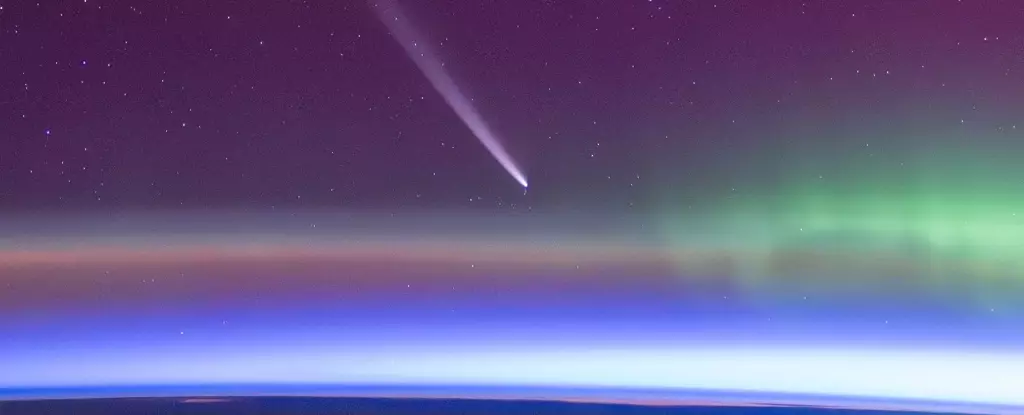The Oort Cloud, while often overlooked in discussions about our solar system, represents an intriguing element of the cosmos. Picture a vast, invisible shell encircling the Sun and planets; this celestial phenomena is made up of icy bodies that are exceedingly far from any significant source of light, like that of our Sun. Spanning an estimated 10 trillion miles and possibly sheltering around 100 billion objects, the Oort Cloud is not merely a theoretical construct; it serves as an explanation for the behavior of certain comets that wander into our solar system. Though these comets may grace our night sky for only a brief moment, they shed light on the deeper mysteries of our cosmic neighborhood.
The Oort Cloud’s residents are critical to our understanding of the solar system’s formation and even the origins of life on Earth. Some scientists hypothesize that water necessary for life’s inception may have arrived via these icy celestial bodies, crashing onto our planet over eons. Yet, this stellar reservoir is a double-edged sword; the same entities that may have fostered our existence could also threaten it.
Recently, two comets have captured the attention of aficionados and astronomers alike, as they make their way toward Earth in the days leading up to Halloween. Tsuchinshan-ATLAS, or C/2023 A3, is expected to peak in brightness around mid-October, becoming a sight visible to the naked eye. Enthusiasts should keep their gaze to the western sky shortly after sunset during this period. Meanwhile, another newcomer, C/2024 S1 (ATLAS), discovered on September 27, is anticipated to be visible around the end of October. Its closest approach to Earth will be on October 24, and it may reappear after swinging around the Sun, right around Halloween.
Despite their allure, comets like these carry an element of unpredictability. The patterns governing their paths can shift dramatically due to gravitational influences, leading to unexpected interruptions in their journeys. Thus, while we might eagerly await these celestial visitors, we must remember that they are remnants from the distant past, possibly carrying with them both the gift of water and the risk of disaster.
Dangers Encircling Earth: Unearthing the Threats
Long-period comets, such as the ones originating from the Oort Cloud, pose unique hazards to Earth. Their extensive and erratic orbits, influenced by nearby stars’ gravitational pulls, make it challenging to predict when they will appear close to our planet. Unlike short-period comets, which typically have predictable orbits, these long-period comets can emerge unexpectedly, hurtling toward the inner solar system.
The chaos surrounding their orbits was notably depicted in the film “Don’t Look Up,” featuring a fictional comet on a collision course with Earth. While the public fascination with doomsday scenarios captivates audiences, scientific evidence shows that the likelihood of such a catastrophic event occurring is marginal. Every year, astronomers discover numerous new comets, with only a fraction posing any threat to Earth. Investigations into their trajectories and sizes are ongoing, strengthening our understanding of these celestial nomads.
Preparing for the Unknown: The Need for Awareness
Despite the low probabilities, the potential risks presented by Oort Cloud comets necessitate a proactive approach to planetary defense. The success of NASA’s Dart mission, which remarkably altered the trajectory of an asteroid, has showcased methods to mitigate such dangers. This mission proved successful only after extensive preparatories; a similar response to a comet may provide less time for intervention. Unlike asteroids that may have predictable paths, an approaching comet from the Oort Cloud could offer minimal warning.
Hence, scientists advocate for better understanding of these icy dwellers of the outer solar system. By characterizing their sizes and compositions, we can determine how best to respond to any potential threats. Upcoming projects such as the European Space Agency’s Comet Interceptor aim to study these ancient bodies, offering insights that may well elucidate the origins of our solar system.
As we turn our gaze upward, it’s reassuring to know that the comets currently visiting us pose little threat. Tsuchinshan-ATLAS will come as close as 44 million miles from Earth, while C/2024 S1 (ATLAS) will approach at around 80 million miles. Though these distances are relatively small on a galactic scale, they signify a safe passage through our skies. Such celestial events remind us of both the beauty and the fragility of our existence within this vast universe, urging us to continue exploring and understanding the cosmos we inhabit.


Leave a Reply